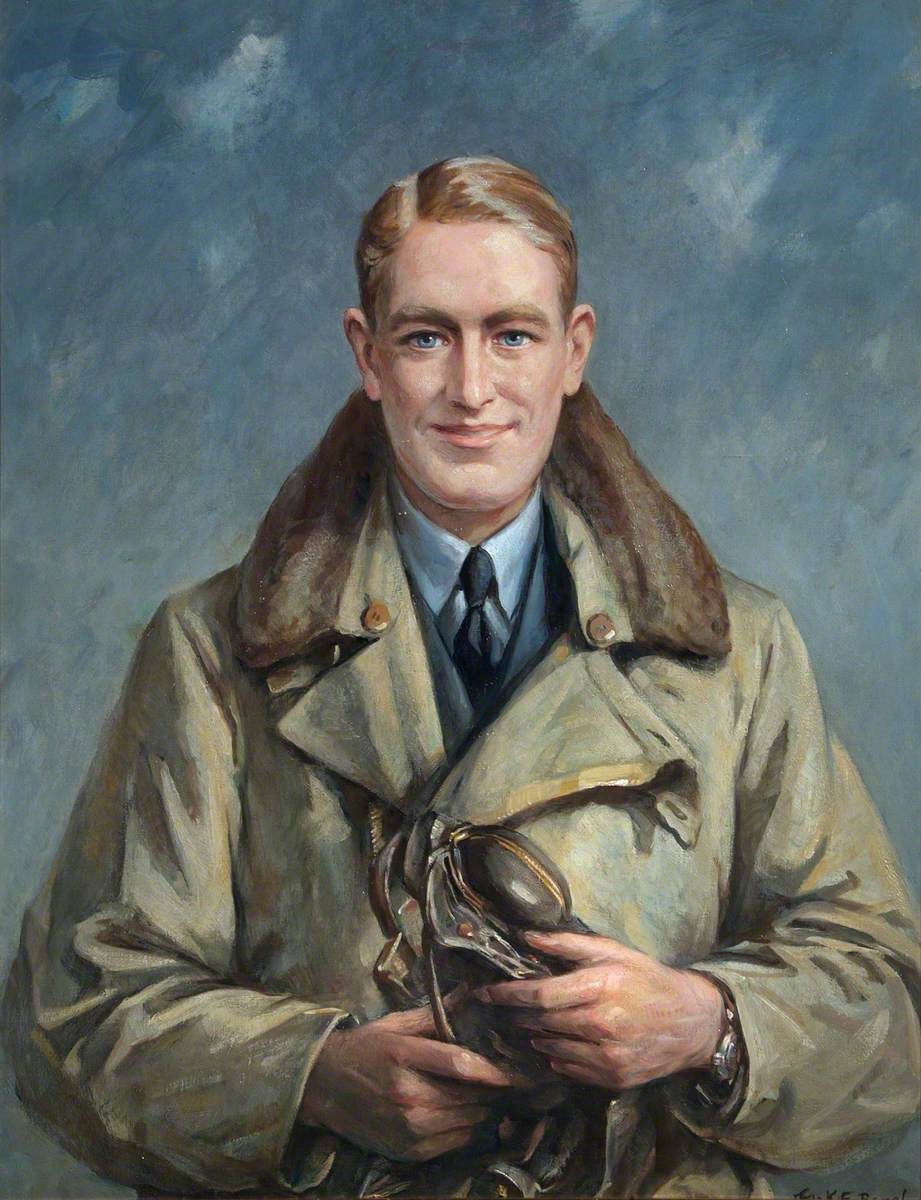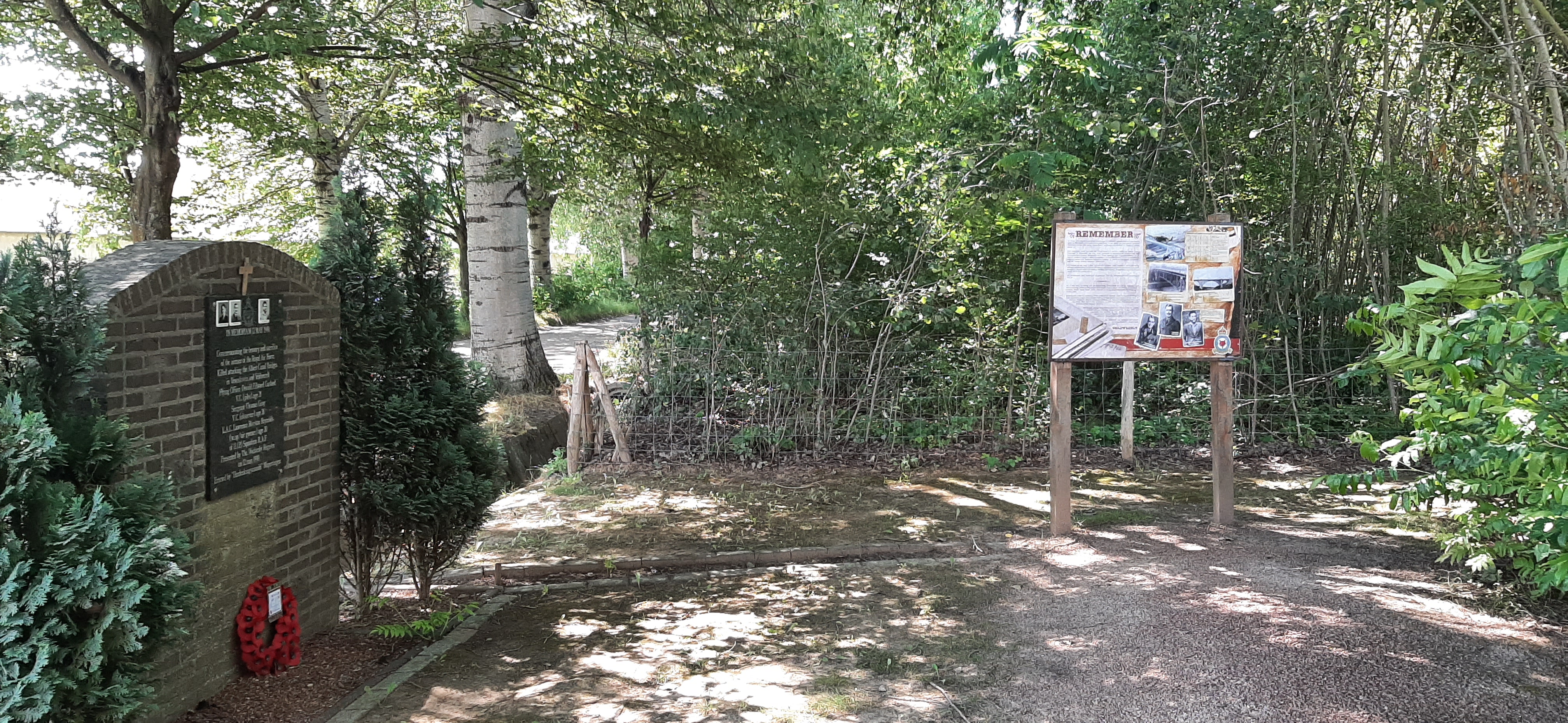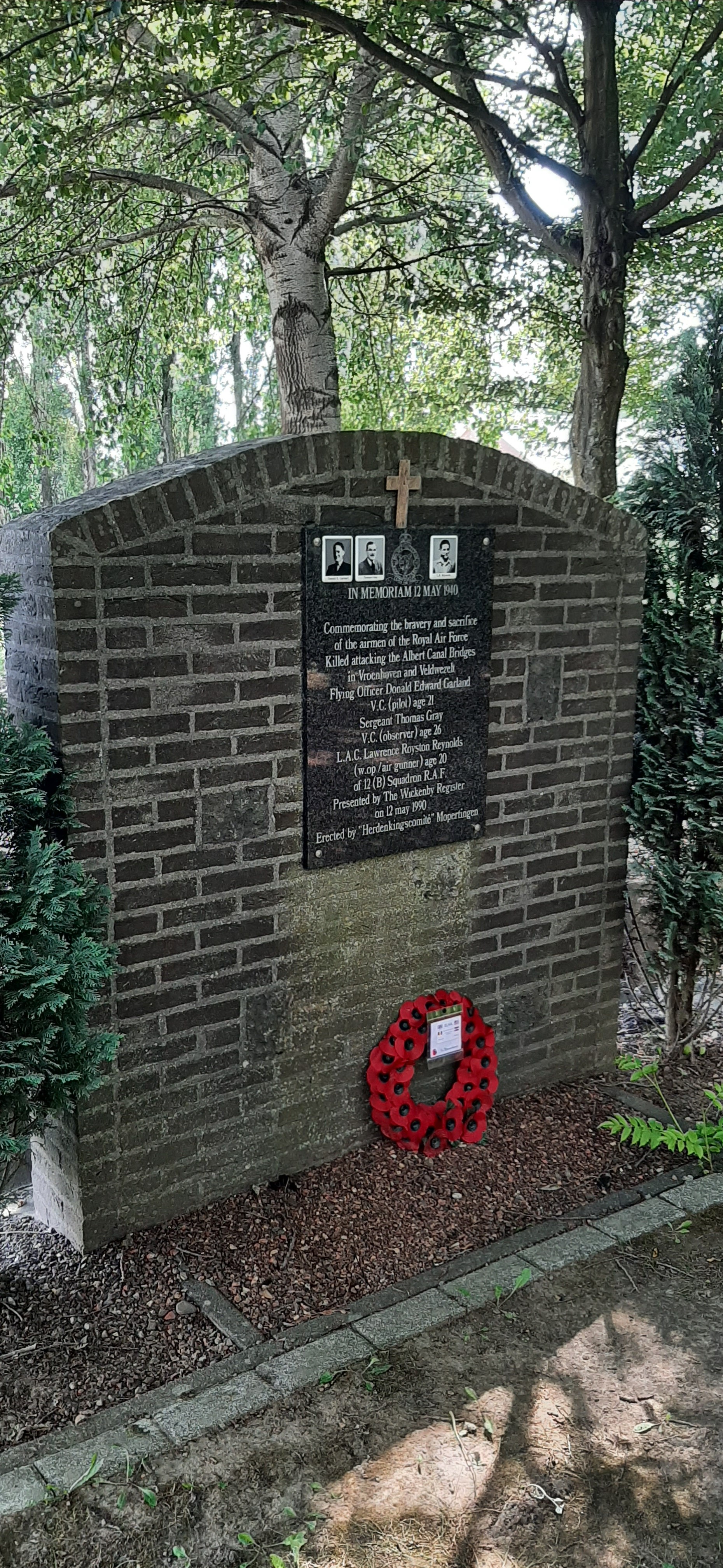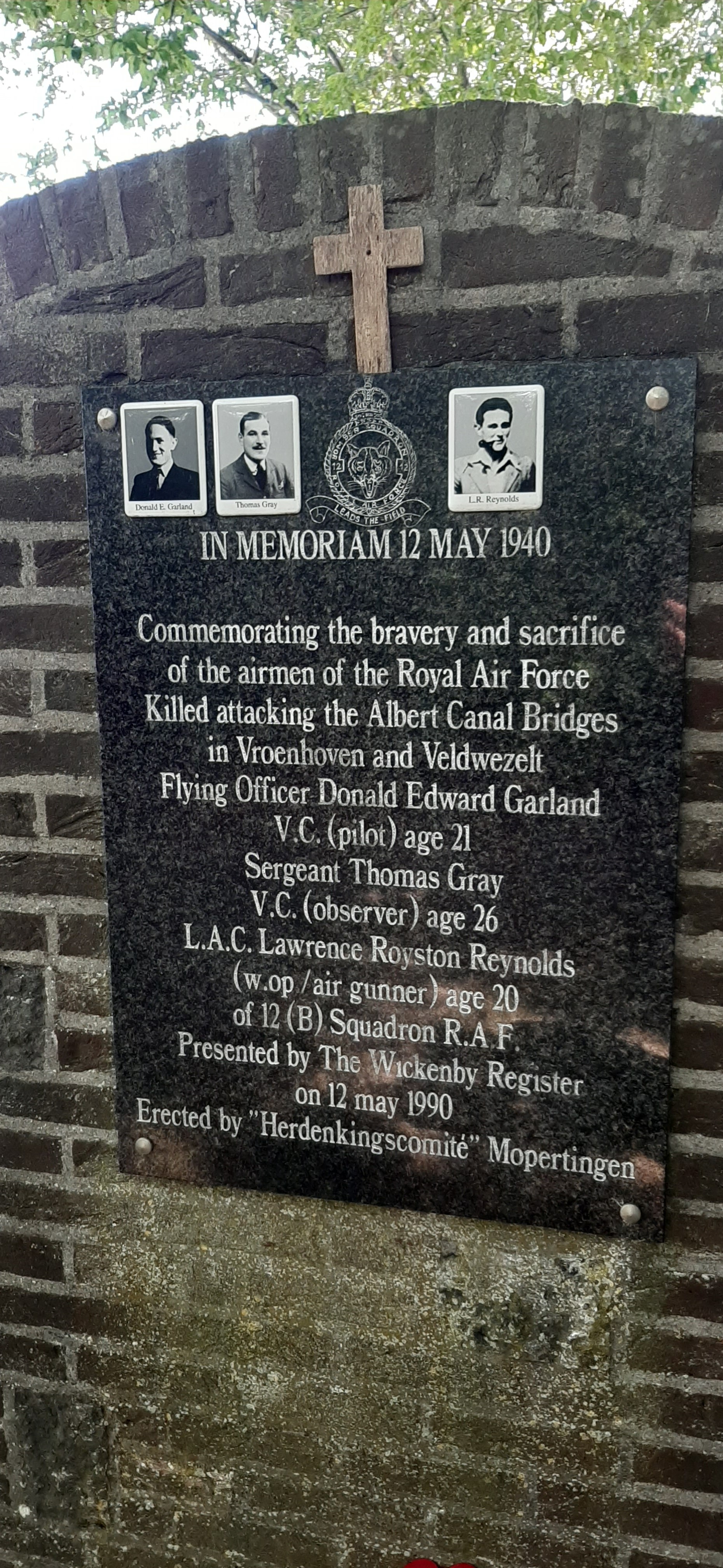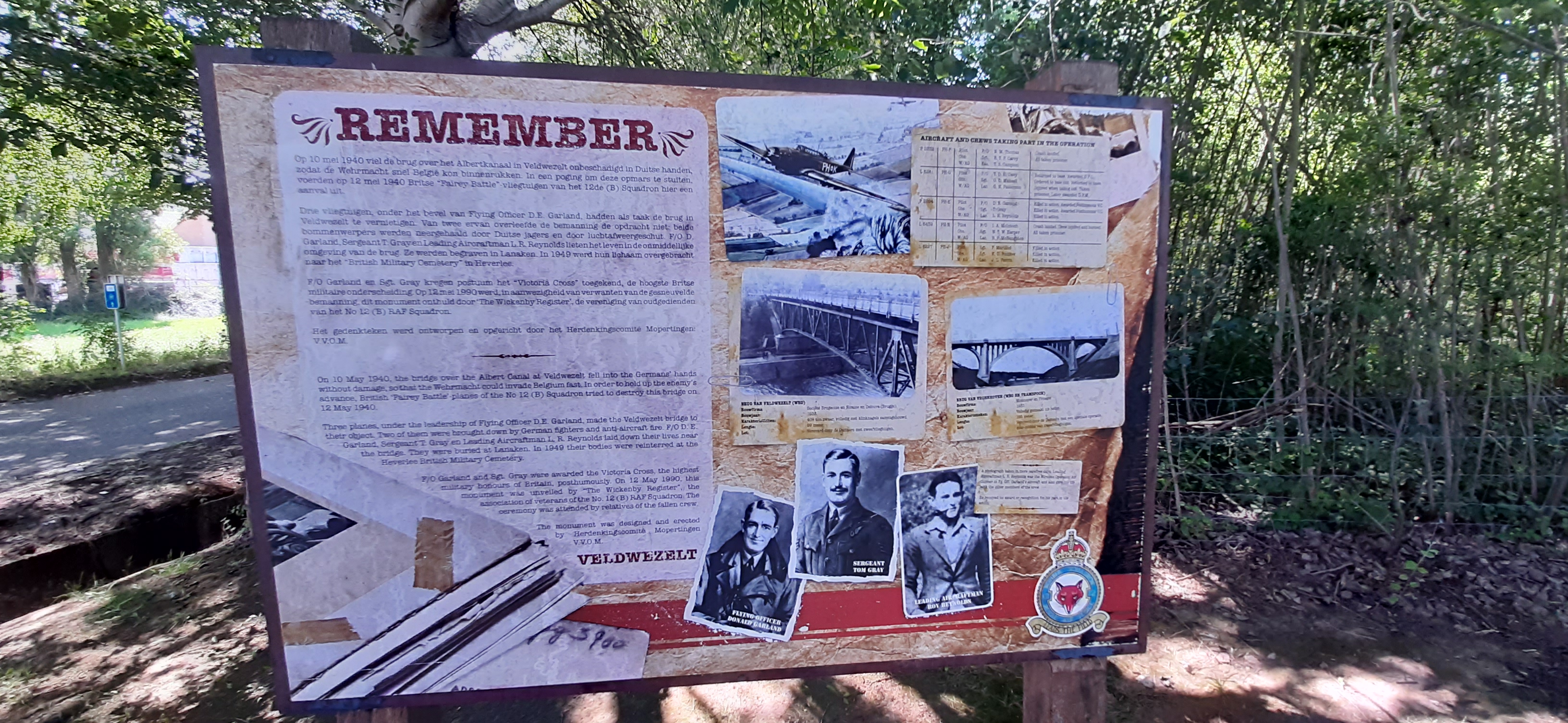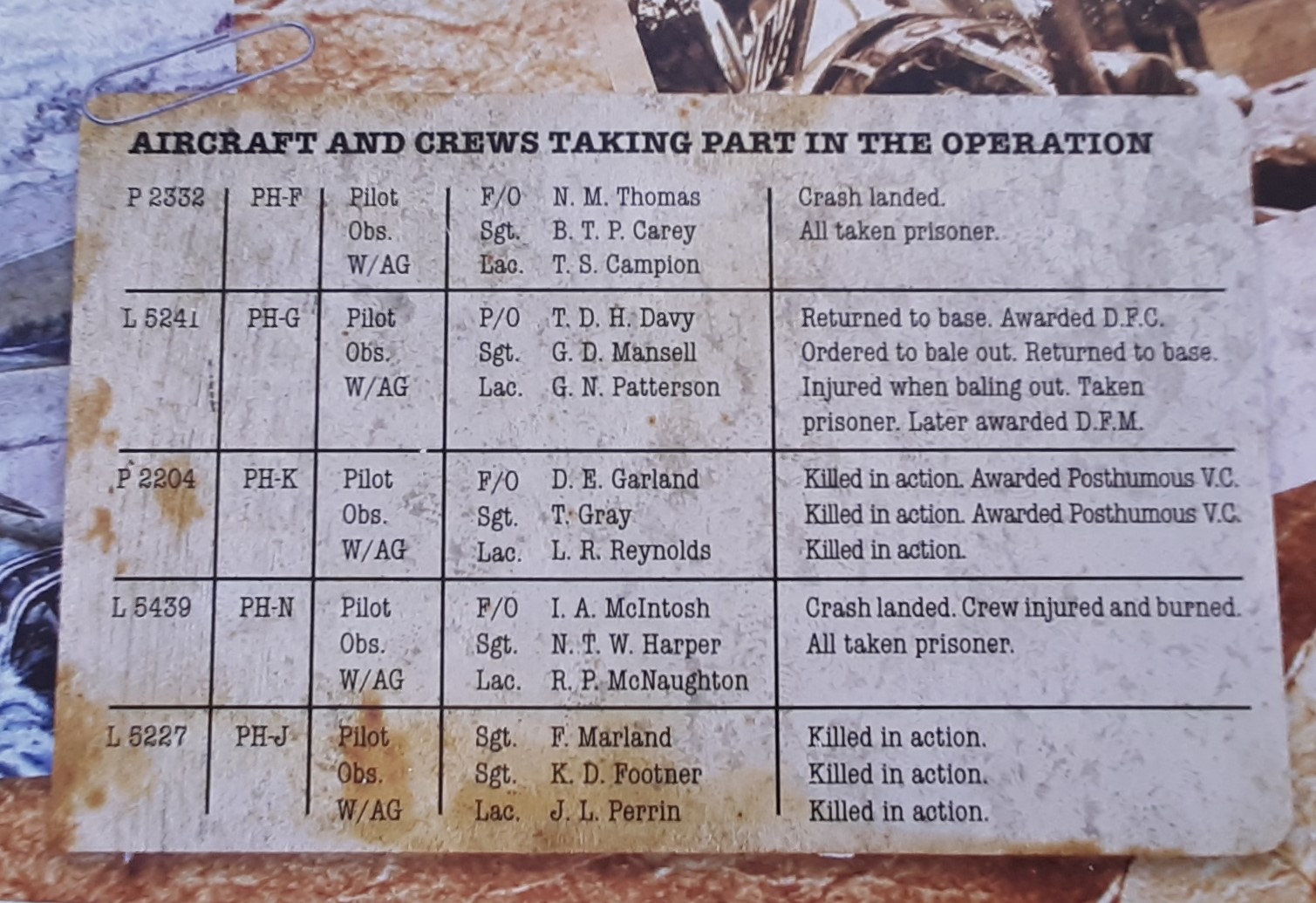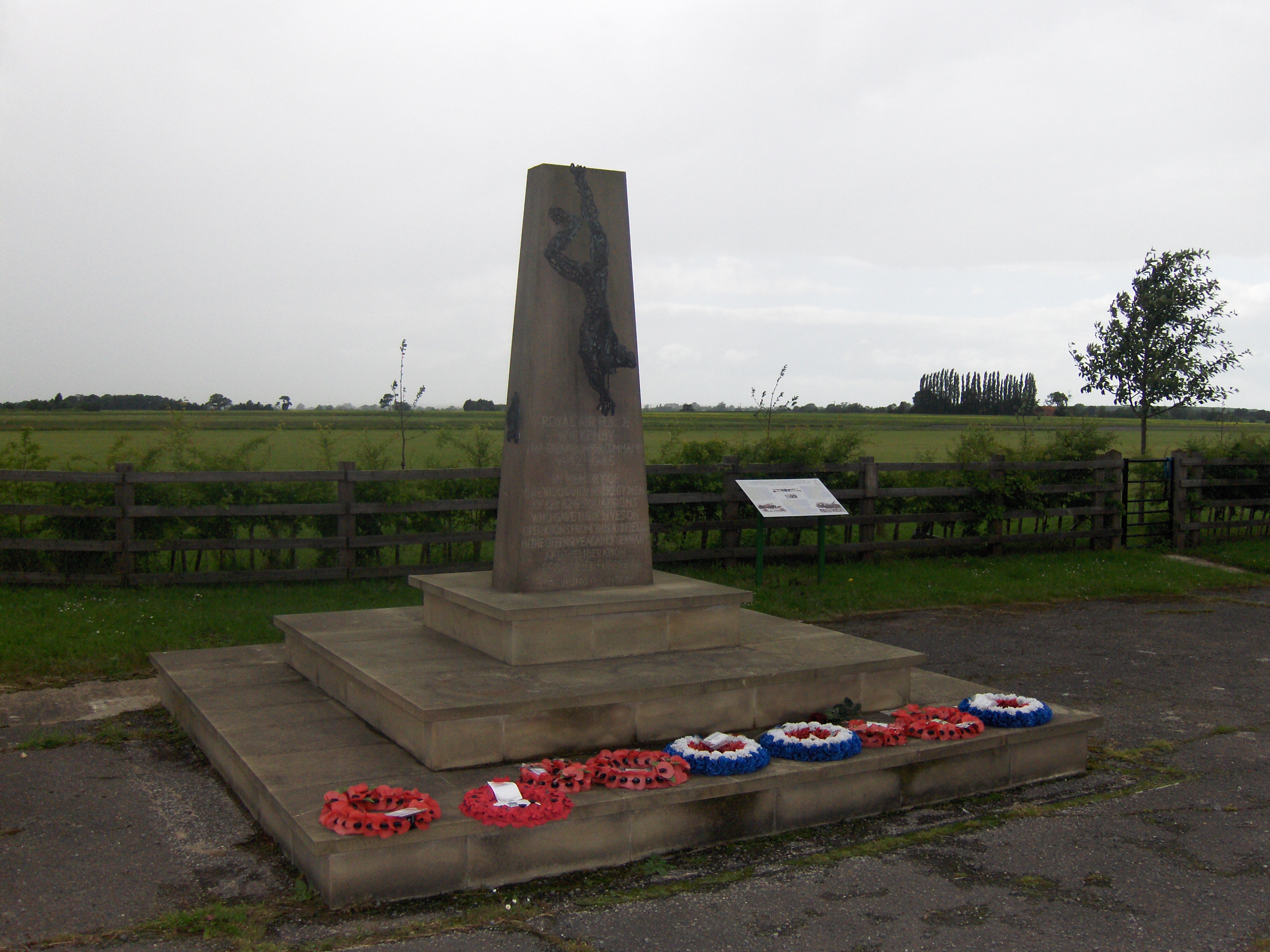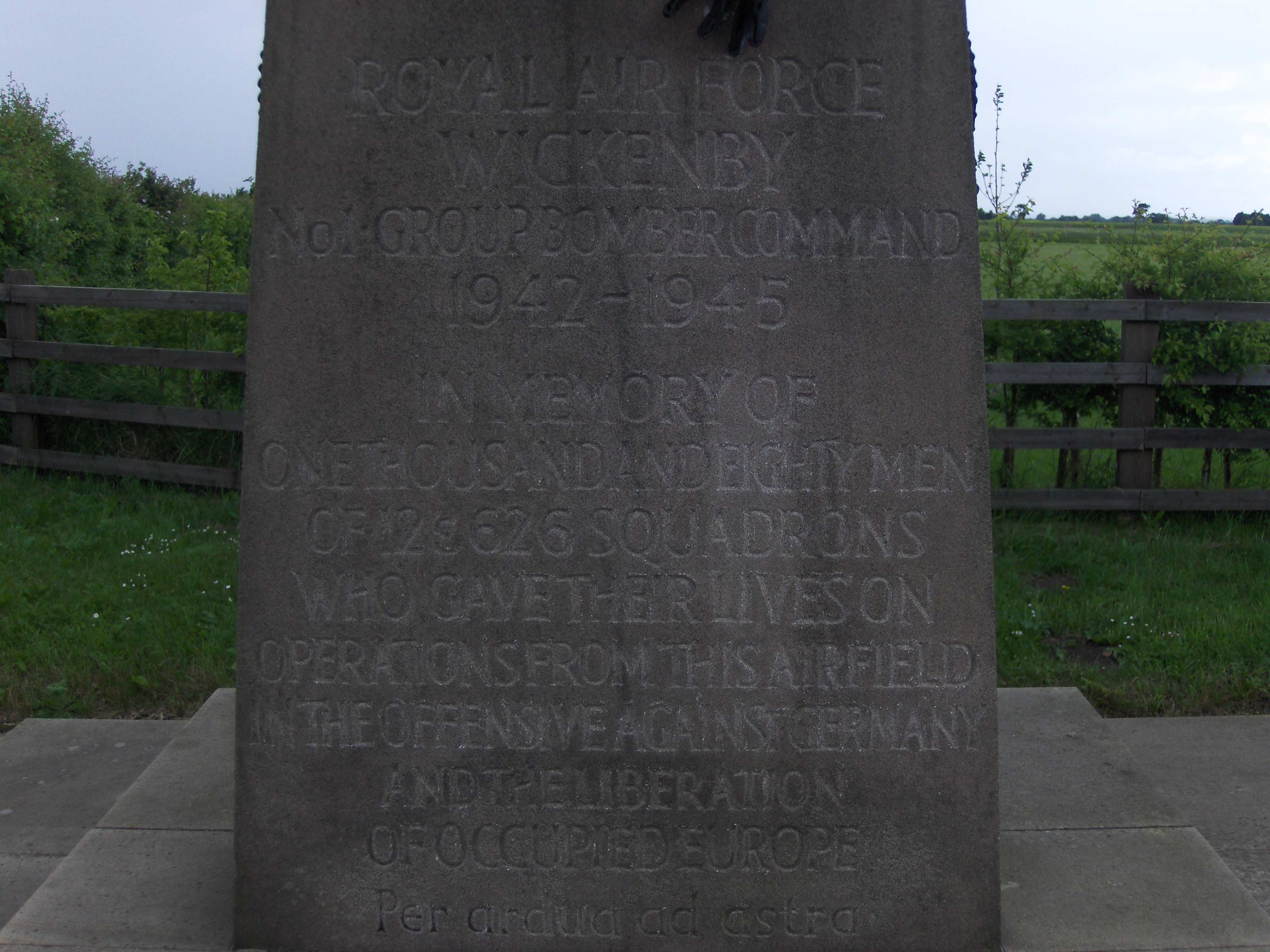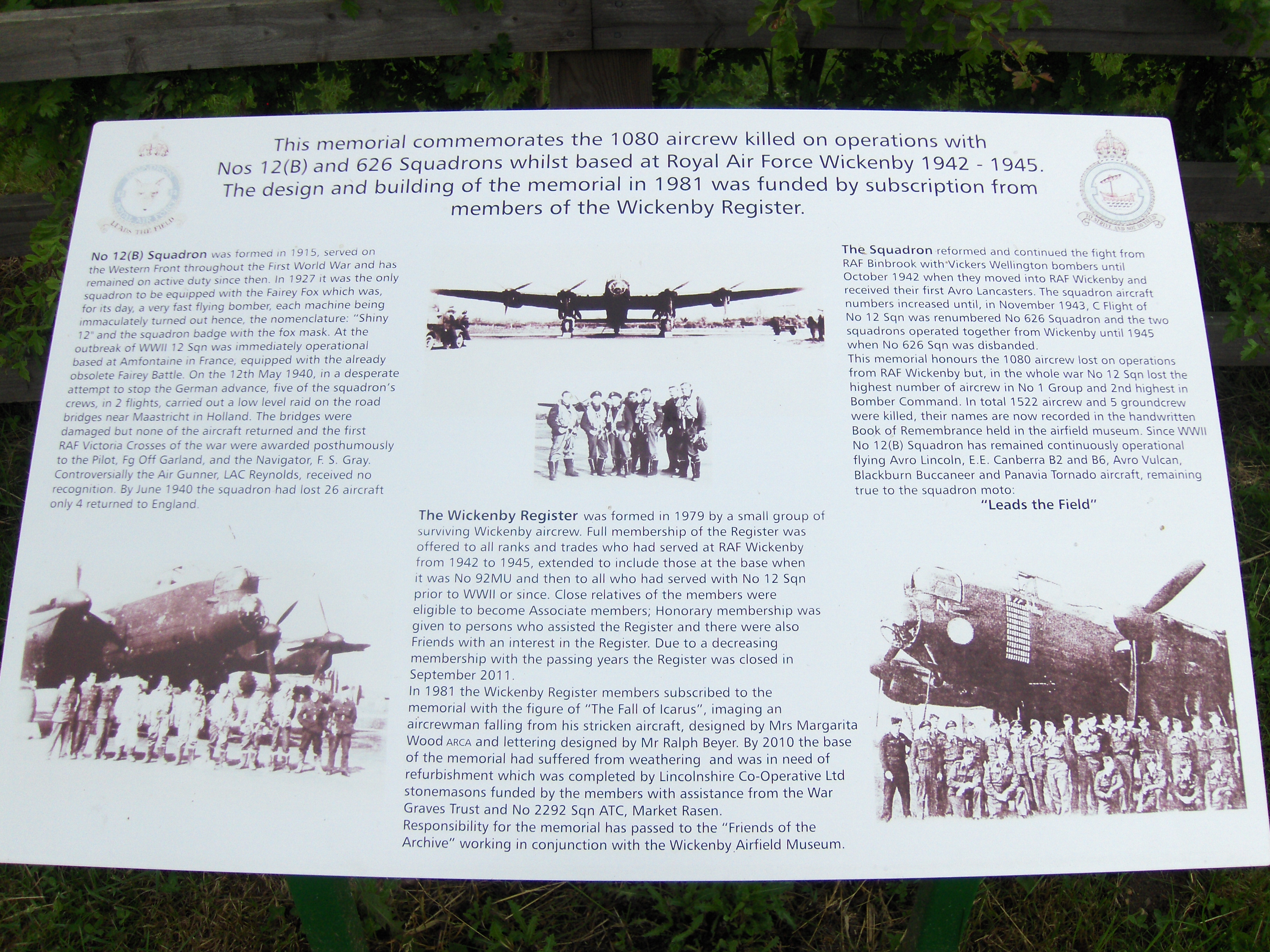Garland, Donald Edward
Personal Information
| Rank | F/O |
| Forename(s) | Donald Edward |
| Surname | Garland |
| Gender | M |
| Age | 21 |
| Decorations | VC |
| Date of Death | 12-05-1940 |
| Next of Kin | Son of Patrick Joseph Garland, C.M.G., and of Winifred Irene Garland, of East Finchley, Middlesex. His Brothers, Flt. Lieut. Patrick James Garland, Flt. Lieut. John Cuthbert Garland and Pilot Offr. Desmond William Garland, Also Died On Service. |
Aircraft Information
| Aircraft | Fairey Battle I |
| Serial Number | P2204 |
| Markings | PH-K |
Memorial Information
| Burial/Memorial Country | Belgium |
| Burial/Memorial Place | Heverlee War Cemetery |
| Grave Reference | Coll. grave 6. F. 14-16. |
| Epitaph | TO HIS GLORIOUS MEMORY. AT REST WITH HIS THREE BROTHERS. "THY WILL BE DONE" |
IBCC Memorial Information
| Phase | 2 |
| Panel Number | 168 |
Enlistment Information
| Service Number | 40105 |
| Service | Royal Air Force |
| Group | AASF |
| Squadron | 12 |
| Squadron Motto | Leads the field |
| Trade | Pilot |
| Country of Origin | United Kingdom |
Other Memorials
| Location | Industrieweg, Veldwezelt, Limburg Province |
| Country | Belgium |
| Memorial Type | Brick pillar, inscribed marble tablet & stencilled information board |
| Memorial Text |
Translation "A memorial to the crew of Fairey Battle P2204 of 12 Sqn, lost on 12 May 1940 attacking bridges over the Albert Canal" |
| Location | Wickenby Airfield, Wickenby, Lincolnshire |
| Country | United Kingdom |
| Memorial Type | Inscribed Stone Memorial with Sculpture of Icarus & Information Board |
| Memorial Text | Royal Air Force Wickenby No1 Group Bomber Command 1942-1945 In memory of one thousand and eighty men of 12 & 626 Squadrons who gave their lives on operations from this airfieldin the offensive against Germany and the liberation of occupied Europe Per ardu |
Miscellaneous Information
| One of five Battles lost by 12 Squadron in this near-suicidal operation |
| VC Citation (London Gazette 11th June 1940): "Flying Officer Garland was the pilot and Sergeant Gray was the observer of the leading aircraft of a formation of five aircraft that attacked a bridge over the Albert Canal which had not been destroyed and was allowing the enemy to advance into Belgium. All the aircrews of the squadron concerned volunteered for the operation, and, after five crews had been selected by drawing lots, the attack was delivered at low altitude against this vital target. Orders were issued that this bridge was to be destroyed at all costs. As had been expected, exceptionally intense machine-gun and anti-aircraft fire were encountered. Moreover, the bridge area was heavily protected by enemy fighters. In spite of this, the formation successfully delivered a dive-bombing attack from the lowest practicable altitude. British fighters in the vicinity reported that the target was obscured by the bombs bursting on it and near it. Only one of the five aircraft concerned returned from this mission. The pilot of this aircraft reports that besides being subjected to extremely heavy anti-aircraft fire, through which they dived to attack the objective, our aircraft were also attacked by a large number of enemy fighters after they had released their bombs on the target. Much of the success of this vital operation must be attributed to the formation leader, Flying Officer Garland, and to the coolness and resource of Sergeant Gray, who in most difficult conditions navigated Flying Officer Garland's aircraft in such a manner that the whole formation was able successfully to attack the target in spite of subsequent heavy losses. Flying Officer Garland and Sergeant Gray did not return." |
Commonwealth War Graves Commission
Fellow Servicemen
Please note that this list gives all the losses aboard the quoted aircraft and occasionally these may have occurred on an earlier date when the aircraft was not itself lost. Please check the dates of death carefully.
Last Operation Information
| Start Date | 12-05-1940 |
| End Date | 12-05-1940 |
| Takeoff Station | Amifontaine |
| Day/Night Raid | Day |
| Operation | Airborne 08:22 hrs from Amifontaine, France with orders to destroy a metal bridge spanning the Albert Kanaal at Maastricht (Operation Veldwezelt). |
| Reason for Loss | Shot down in a hail of fire alongside the target, Garland and his observer were both awarded Victoria Crosses for this action, the RAF's first of the war, but, strangely, there was no award for their gunner. He was one of four brothers to die in RAF service during the war |
